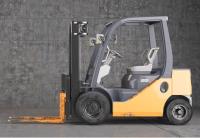 Add My Company
Add My Company
Sign In
EXCAVATOR RISK MANAGEMENT
23-09-2014

In considering safely operating an Excavator, first and foremost a hazard free traffic zone must be created. The area under excavation must be clearly marked and separated from traffic and people. This can be accomplished with road blocking equipment; plenty of supplies will help with this and with clear signs to guide and instruct everyone.
There are three basic hazards to note while working with an Excavator on a site. When the Excavator is in reverse, a signaler will help the driver. The signaler is an important part of the team. He is the extra eyes and ears of the driver on the ground. Another hazardous condition is when the machine is operating. The team must be certain there is enough clearage around the machine from the surrounding buildings. Obviously, you don’t want to knock down the wrong building with all those people in it! So, there needs to be enough space surrounding the Excavator between environmental structures and the bucket. If regular checks are not made, there have been instances of the bucket coming off the Excavator.
How to Mitigate Risk
There are basically five main steps that will help manage and control hazards on an excavation site. We’ve mentioned three:
Create a pedestrian and traffic free zone, check clearance of the surrounding area and check the bucket. The signallers and drivers should have a clear view of the site. Visibility is important so that pedestrians can be easily seen and accidents can be prevented. Even though having good signage that explains where to walk and where not to, it is important to be vigilant and take responsibility for all activities on the excavation site.
Three groups need to be trained in order to avoid mishaps and worse: signalers, drivers and pedestrians (more generally, the public, including vehicles). Signallers and drivers must exhibit some valid certificate of competency, as well as actual ability. Some may have natural ability, but need to sharpen their skills with awareness of the actual conditions and equipment. The general public need to pay attention to clear signage that directs their paths.
The final and vitally important step in maintaining and managing the excavation site and the Excavator, is daily inspections and reports. The inspector should have a check list that thoroughly examines everything about the Excavator and gives it a rating. Included should be suggestions about timely repairs. An aspect of the Excavator may still be functional but in need of repairs.
To summarise, managing and maintaining an Excavator and properly operating one requires attention to the environment, operators and equipment. Accidents can be avoided with due care and attention.
For more information on EXCAVATOR RISK MANAGEMENT talk to Pro Trainers UK
Enquire Now
List your company on FindTheNeedle.
